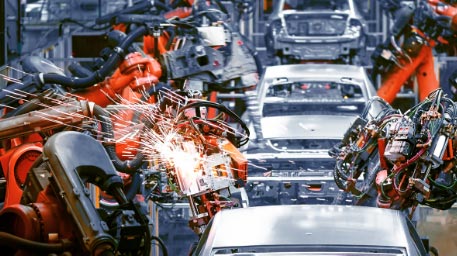
Today (March 8th) is International Women's Day - In 2019, it might seem condescending to celebrate female engineers just for doing their jobs. However, it’s important to point out that of all engineers in the UK, just 11% are female.
While this is clearly not enough, at Millbank in recent years we have seen a slight shift in our placements to this gender imbalance for many disciplines traditionally dominated by male candidates. A few examples of women we have placed in the past year in contract and permanent roles include:
- Development Chemist for a leading chemical manufacturer
- Additive Manufacturing Technician for a world championship winning Formula One team
- CAD Technician (EC&I) for an industrial contractor
- Cost Engineer for an industrial services provider
- Release Analyst for a luxury Automotive manufacturer
- Architectural REVIT Technologist for an architecture practice
This is encouraging, but we need even more women in engineering roles for a number of reasons.
Innovation and diversity
Studies show that a more diverse working environment leads to more innovation and new ideas being brought to the table. By hiring employees of different genders as well as ages, races and backgrounds, businesses benefit from new perspectives being brought together to find new solutions and a competitive advantage.
Closing the skills gap
With the UK facing a continuing engineering skills gap, many more roles could be filled if more women were encouraged to enter engineering professions. The UK government has estimated that to reduce our current skills shortage, we’ll need around 186,000 skilled recruits each year for the next five years. This deficit could be filled by a more diverse workforce, including more women, coming out of higher education or into apprenticeships.
Inspiring the next generation
Girls consistently out perform boys in STEM subjects in their GCSE results, however a lower proportion of girls than boys go on to study STEM subjects at higher education.
Research by the Institute for Fiscal Studies last year indicated that a big reason for this is a lack of peers on these courses – in other words, there is a perception amongst girls that STEM subjects and careers are male-dominated. Many girls do not feel confident to pursue engineering as one of the only females around them.
The same study found that talks and interactions with female role models working in STEM is seen as one of the most effective ways to change this perception, as well as work experience and placements.
Women working in engineering now can be fantastic ambassadors to show girls that their careers are rewarding and fulfilling, and not just an option for boys, so it’s important to use International Women’s Day to highlight their experiences.

What’s your story?
Are you a woman working in an engineering discipline? Have you seen a change in your working environment to be more inclusive? What is your story, and do you think it’s important to encourage more women to explore engineering as a career choice?
Join the conversation using the hashtag #InternationalWomensDay on our LinkedIn page, on Twitter or on Facebook.





